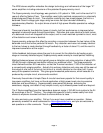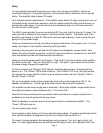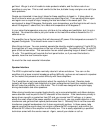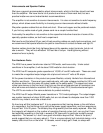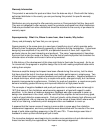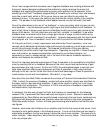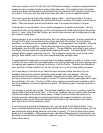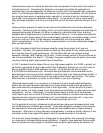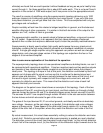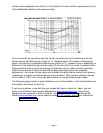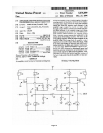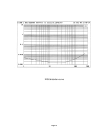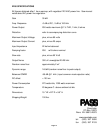Page 9
Supersymmetry does not reduce the distortion and noise present in either half of the output of
the balanced circuit. Comparing the distortion curves before and after the application of
supersymmetry, we see essentially no difference in either half of the balanced pair considered
alone. It is the balanced differential characteristic that improves dramatically, and that leads to
one singular requirement of supersymmetric operation; it must be driven by a balanced input
signal and it only produces a balanced output signal. You could drive it with a single-ended
input and hook a speaker up to only one output and ground, but there would be no point to it at
all.
Supersymmetry operates to make the two halves of the balanced circuit behave absolutely
identically. Constructing the two halves of the circuit with identical topologies and matching the
components precisely achieves a 20 dB or so reduction in distortion and noise, and local
feedback with a Supersymmetric connection another 20 dB or so. This is easily accomplished
with only one gain stage instead of the multiple stages required by conventional design, and so
it results in only one “pole” of high frequency characteristic, and is unconditionally stable
without compensation. In fact, if you build a supersymmetric circuit with multiple gain stages, it
does not work as well.
In 1993 I attempted to build the first power amplifier using this principle, but it was not
successful. Ironically, the supersymmetric concept not only allows for very simple gain circuits,
but it requires them for good performance. My first efforts did not use a simple enough
approach, although I didn’t realize it at the time. A more modest version of the circuit found its
way into a preamplifier, the Aleph P. Ultimately the power amplifier was set aside, as we were
very busy building Aleph single-ended Class A amplifiers.
In 1997 I decided to build a state-of-the-art
very high power
amplifier, the X1000, a project not
particularly appropriate for the single-ended Class A approach (believe me, you don’t want to
own an amplifier idling at 3000 watts per channel). So I pulled out the files on patent
# 5,376,899 and took another look. Extensive testing of potential circuits revealed that the
best topology for the front end of the amplifier is what we refer to as “balanced single-ended”, a
phrase I use to refer to differential use of two single-ended Class A gain devices. The classic
differential pair of transistors (or tubes, for that matter) is just such a topology.
“Balanced single-ended” is an oxymoron in the sense that most single-ended enthusiasts
believe that the most desirable characteristic of single-ended circuits is their generation of
even-order distortion components by virtue of their asymmetry. Purists will point out that a
balanced version of a single-ended circuit will experience cancellation of noise and even-order
components. Just so. Interestingly, the single-ended nature of each half of the balanced
circuit doesn’t give rise to much in the way of odd-order distortion, and when the even-order
components and noise are cancelled there isn’t much distortion and noise left. In any case,
“Balanced single-ended” is a phrase that accurately describes the circuit.
For the amplifier’s front end, a balanced single-ended gain stage was developed which used
just a differential pair of Mosfet gain devices. These were biased by constant current sources
and cascoded for maximum performance and given local feedback and a Supersymmetric
connection. After years of trying alternative arrangements, it ended up virtually identical to the
schematic on the cover page of the patent, which is reproduced later in this manual.
The front end, which develops all the voltage gain for the amplifier, then presents this voltage
to a large bank of follower Mosfet power transistors. Originally it was assumed that we would
have to enclose this output stage in a feedback loop to get the performance we wanted, but




